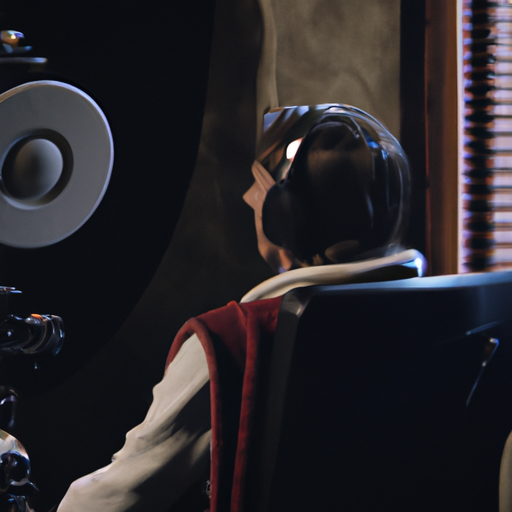
“Bring your sound design to life with Reverb and Delay – Unlock the power of atmosphere!”
Introduction
Reverb and delay are two of the most important tools in sound design. They can be used to create atmosphere, add depth, and create a sense of space. Reverb and delay can be used to create a wide range of sounds, from subtle ambience to intense soundscapes. In this article, we will discuss how to use reverb and delay in sound design, and provide some tips and techniques for creating atmosphere. We will also discuss how to use reverb and delay to create a sense of space and depth in your sound design.
How to Use Reverb to Create a Sense of Space in Sound Design
Creating a sense of space in sound design is an important part of creating a realistic and immersive experience for the listener. Reverb is a powerful tool for achieving this effect. Reverb is an effect that simulates the natural reverberation of sound in a physical space. It can be used to create a sense of depth and distance in a soundscape.
When using reverb to create a sense of space, it is important to consider the size and shape of the space you are trying to simulate. Different types of reverb can be used to simulate different types of spaces. For example, a large hall or cathedral would require a longer reverb time than a small room. The reverb time should also be adjusted to match the size of the sound source. A larger sound source will require a longer reverb time than a smaller sound source.
It is also important to consider the type of sound you are trying to create. Different types of reverb can be used to create different types of atmospheres. For example, a bright, lively atmosphere can be created with a bright, short reverb, while a more subdued atmosphere can be created with a darker, longer reverb.
When using reverb to create a sense of space, it is important to consider the context of the sound. Reverb should be used to enhance the sound, not overpower it. Too much reverb can make a sound muddy and indistinct. It is important to find the right balance between reverb and the sound source.
Finally, it is important to experiment with different types of reverb to find the right sound for your project. Reverb can be used to create a wide range of atmospheres and can be used to great effect in sound design. With a little experimentation, you can find the perfect reverb to create a sense of space in your sound design.
Exploring Different Types of Reverb to Enhance Your Sound Design
Reverb is an essential tool for sound designers, allowing them to create a sense of space and atmosphere in their work. It can be used to add depth and texture to a soundscape, or to create a sense of realism in a virtual environment. There are many different types of reverb available, each with its own unique characteristics and uses. In this article, we will explore the different types of reverb and how they can be used to enhance your sound design.
The most common type of reverb is known as “room reverb”. This type of reverb is created by simulating the sound of a room, and is often used to create a sense of space and atmosphere. Room reverb can be used to add depth and texture to a soundscape, or to create a sense of realism in a virtual environment.
Another type of reverb is known as “plate reverb”. This type of reverb is created by using a metal plate to simulate the sound of a room. Plate reverb is often used to create a more natural sounding reverb, as it is able to capture the nuances of a room’s acoustics.
The third type of reverb is known as “convolution reverb”. This type of reverb is created by using a digital signal processor to simulate the sound of a room. Convolution reverb is often used to create a more realistic sounding reverb, as it is able to capture the nuances of a room’s acoustics in greater detail.
Finally, there is “echo reverb”. This type of reverb is created by using a delay effect to simulate the sound of an echo. Echo reverb is often used to create a sense of distance and depth in a soundscape, or to create a sense of movement in a virtual environment.
By exploring the different types of reverb available, sound designers can find the perfect reverb to enhance their sound design. Whether you are looking to add depth and texture to a soundscape, or to create a sense of realism in a virtual environment, reverb can be a powerful tool for sound designers.
Using Delay to Create Unique Effects in Sound Design
Delay is a powerful tool in sound design that can be used to create unique effects. Delay is an audio effect that records an input signal and plays it back after a period of time. This creates a distinct echo-like effect that can be used to enhance the sound of a track.
Delay can be used to create a wide range of effects, from subtle ambience to more dramatic soundscapes. It can be used to add depth and texture to a track, or to create a sense of space and movement. It can also be used to create rhythmic patterns and to add a sense of movement to a track.
Delay can be used to create unique effects by manipulating the delay time, feedback, and mix parameters. The delay time determines how long the delay effect will last, while the feedback parameter determines how many times the signal will be repeated. The mix parameter determines how much of the delayed signal will be heard in relation to the original signal. By manipulating these parameters, it is possible to create a wide range of unique effects.
Delay can also be used to create unique effects by combining it with other effects. For example, it can be combined with reverb to create a more spacious sound, or with distortion to create a more distorted sound. It can also be used to create unique rhythmic patterns by combining it with a sequencer or arpeggiator.
Delay is a powerful tool in sound design that can be used to create unique effects. By manipulating the delay time, feedback, and mix parameters, it is possible to create a wide range of unique effects. It can also be combined with other effects to create even more unique sounds. With a little experimentation, it is possible to create some truly unique and interesting sounds with delay.
Tips for Combining Reverb and Delay for Maximum Impact
1. Start with a low-level reverb and delay. When combining reverb and delay, it is important to start with a low-level of both effects. This will allow you to gradually increase the levels of each effect until you achieve the desired sound.
2. Use a short delay time. When combining reverb and delay, it is important to use a short delay time. This will help to create a more cohesive sound and will prevent the delay from overpowering the reverb.
3. Experiment with different reverb and delay settings. When combining reverb and delay, it is important to experiment with different settings. Try different reverb and delay times, as well as different levels of each effect. This will help you to find the perfect combination for your sound.
4. Use a high-pass filter. When combining reverb and delay, it is important to use a high-pass filter. This will help to reduce the low-end frequencies and will help to create a more focused sound.
5. Use a low-cut filter. When combining reverb and delay, it is important to use a low-cut filter. This will help to reduce the high-end frequencies and will help to create a more balanced sound.
6. Use a wet/dry mix. When combining reverb and delay, it is important to use a wet/dry mix. This will allow you to control the amount of each effect in the mix and will help to create a more cohesive sound.
7. Use a stereo spread. When combining reverb and delay, it is important to use a stereo spread. This will help to create a wider sound and will help to create a more immersive experience.
By following these tips, you will be able to combine reverb and delay for maximum impact. Experiment with different settings and find the perfect combination for your sound.
Creative Ways to Use Reverb and Delay to Create Atmosphere in Sound Design
Reverb and delay are two of the most important tools in sound design. They can be used to create a wide range of atmospheres, from subtle ambience to intense soundscapes. Here are some creative ways to use reverb and delay to create atmosphere in sound design.
1. Use Reverb to Create Space: Reverb is a great way to create a sense of space in a sound design. By adding reverb to a sound, you can make it feel like it’s in a large room, a small room, or even an outdoor environment. You can also use reverb to create a sense of depth, making a sound feel like it’s coming from far away or close up.
2. Use Delay to Create Movement: Delay is a great way to create movement in a sound design. By adding delay to a sound, you can make it feel like it’s moving around the space or even bouncing off of walls. You can also use delay to create a sense of tension or suspense, as the sound will repeat itself over time.
3. Use Reverb and Delay Together: Reverb and delay can be used together to create a unique atmosphere. By combining the two effects, you can create a soundscape that is both spacious and dynamic. This can be used to create a sense of mystery or suspense, or to create a dreamy, ethereal atmosphere.
These are just a few of the creative ways to use reverb and delay to create atmosphere in sound design. With a little experimentation, you can come up with your own unique soundscapes.
Conclusion
Reverb and delay are powerful tools for sound design, allowing you to create a wide range of atmospheres and effects. With a little experimentation and practice, you can use these tools to create unique and interesting sounds. Reverb and delay can be used to add depth and texture to a sound, create a sense of space, or even create a sense of movement. With the right techniques, you can use reverb and delay to create a truly immersive soundscape.
